Frederic01
Well-Known Member
- Joined
- Jun 7, 2021
- Messages
- 1,924
- Reaction score
- 4,775
A preview of Camille Miceli's debut for Pucci.
VOGUEInside Camille Miceli’s Delightfully Trippy Pucci Debut
BY MARK HOLGATE
April 20, 2022
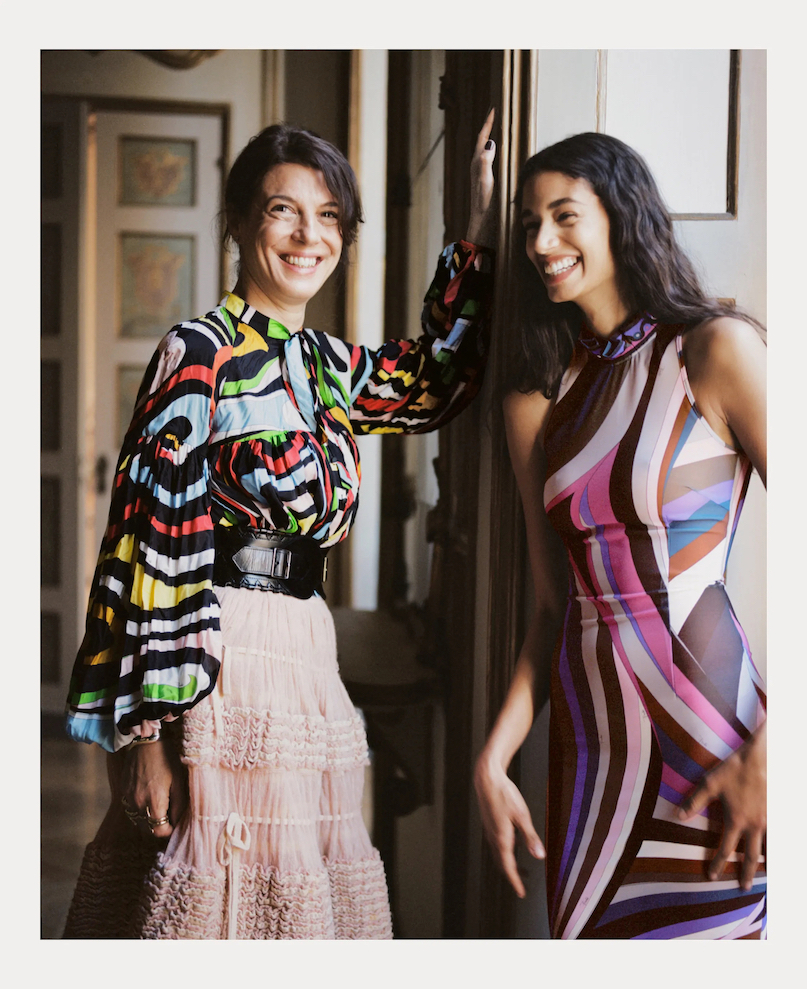
ALL SMILES
Miceli and model Malika El Maslouhi at the Emilio Pucci showroom in Milan. Photographed by Valentin Hennequin
Some of us dream of a life of eternal sunshine—and some of us, like Camille Miceli, get to do it for a living. The Parisian Miceli is the new artistic director of Pucci, having arrived there last September. She joins the house founded in 1947 by Emilio Pucci, which became renowned for its vibrant swirling prints, a potent cocktail of Euro élan, and an every-day-is-a-holiday joie de vivre. And while Pucci’s big breakthrough was in skiwear, the label’s success may be better explained by the way its optimistic prints offered a glimmer of light in postwar Europe.
Miceli, 50, is one of the most influential creatives in fashion you’ve never heard of, a behind-the-scenes powerhouse whose career spans from Chanel to Marc Jacobs–era Louis Vuitton to Dior under John Galliano and Raf Simons before decamping back to Vuitton for Nicolas Ghesquière. She’s remarkably clear about what she wants to do with Pucci, a label which has, in recent years, been passed from designer to designer with varying degrees of success (Peter Dundas did the best job with it, animating the label with a sexier, slicker vibe). Her own Pucci, she says, “is really about well-being—it’s a lifestyle that’s about taking care of yourself.” But, she added, “that doesn’t mean that because you take care of yourself you have to live like a nun—no!” Miceli lets out one of her gorgeous, throaty laughs, as sunny and salty as the Mediterranean in August. “It has to be about enjoying life, especially after all we’ve gone through.”
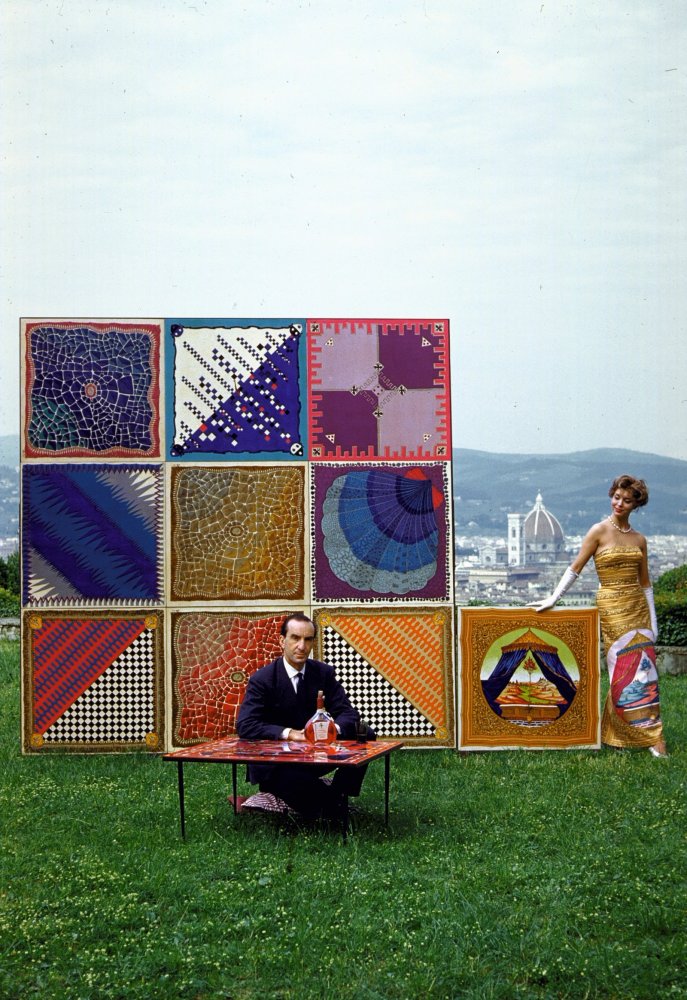
DESIGN FOR LIVING
Emilio Pucci in 1959.
Photo: David Lees/The Chronicle Collection/Getty Images
Delphine Arnault, executive vice president of Louis Vuitton, had no doubt Miceli was the right person for the job. “I am convinced that Camille will give this amazing brand, with its grand heritage and sense of craft, just the right amount of modernity,” she says. “She has such a creative mind, and she has always been a great leader who could create new emblematic pieces for the maisons she worked for. I always thought Camille would be an ideal candidate to lead a house creatively at some point. And when the opportunity of Pucci presented itself, it felt so in line with who she is, this joyful, colorful person, that it only seemed like a natural match.”
Just how much of a match was evident on a recent visit to Pucci’s Milan HQ one sunny February morning while the city was buzzing with Fashion Week, as Miceli’s laughter rang around the enfilade of rooms that make up the label’s atelier. Her debut collection festooned the showroom, which looked as if you were peering at it through a furiously turning kaleidoscope.
Miceli didn’t have any interest in putting her Pucci work up for industry consumption during the grind of shows—instead, it will be presented via a series of three drops, the first appearing at a party in Capri in late April, with the second and last installments following one after the other, a month apart, and all available to buy online. (The next round begins in August.) “Doing shows didn’t feel relevant,” Miceli says. It’s a shrewd move, one more connected to how we might shop for something like Pucci: for very specific reasons and life moments. Yet this new way of doing things also links directly to Pucci’s history with special, characterful, sometimes crazy pieces that make life fun. “It’s going to be more see-now, buy-now: You’ll discover the collection at the same time it’s available. Things won’t be around for ages and ages.”
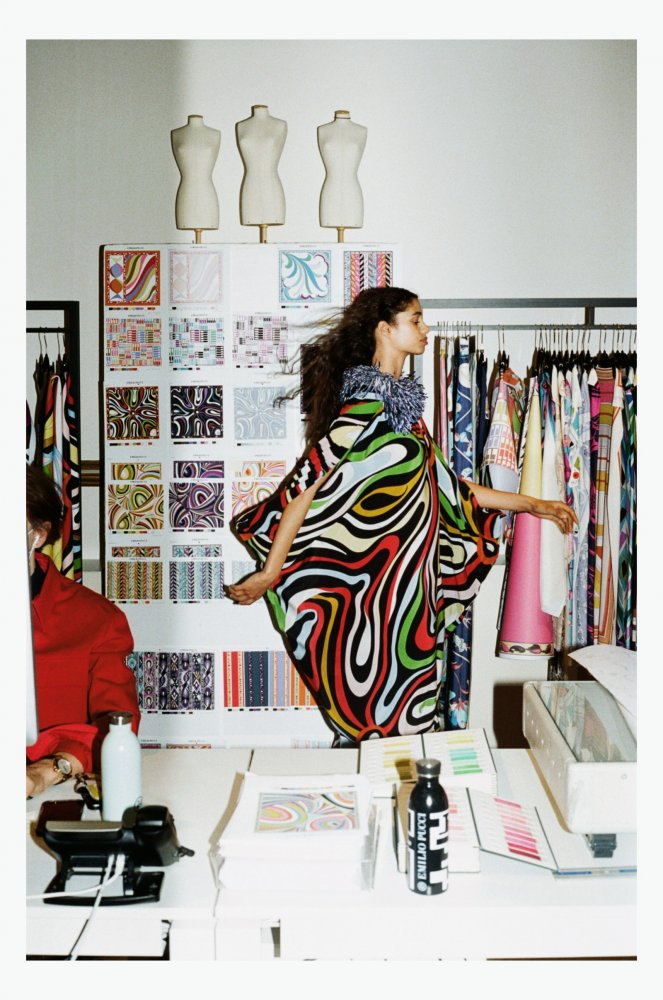
FLYING COLORS
El Maslouhi, wearing Pucci.
Photographed by Valentin Hennequin
Miceli has the eye of a seasoned accessories genius (before Pucci, she did everything from charm-strung oversized hoops for Jacobs’s Louis Vuitton to the cultish Dior double-pearl stud earrings), so she gets how to turn fashion into catnip: The showroom is filled with color-block caftans in flamingo pink and bright orange, some with a raffia-effect fringing on the sleeves; tops that are essentially two scarves sewn together (and which can be twirled around the body); and second-skin tubular dresses in a printed stretch tulle—a favorite of Mr. Pucci, Miceli says—which evoke, she adds approvingly, “a saucy feeling, a sexy feeling.”
Her new accessories, unsurprisingly, are just as spirited: jewel-toned velvet Venetian slippers; backgammon boards (there is a bigger homewares push imagined for the future); straw bags woven with strips of unused Pucci fabrics, with other silky remnants pieced together to create reversible totes; blocks to rest your head on the beach—or to assist in a yoga headstand; and flip-flops shaped like fish, a sly wink to the house’s new logo of interlocking fish, which Miceli dreamed up—a mystical ode to the oceans.
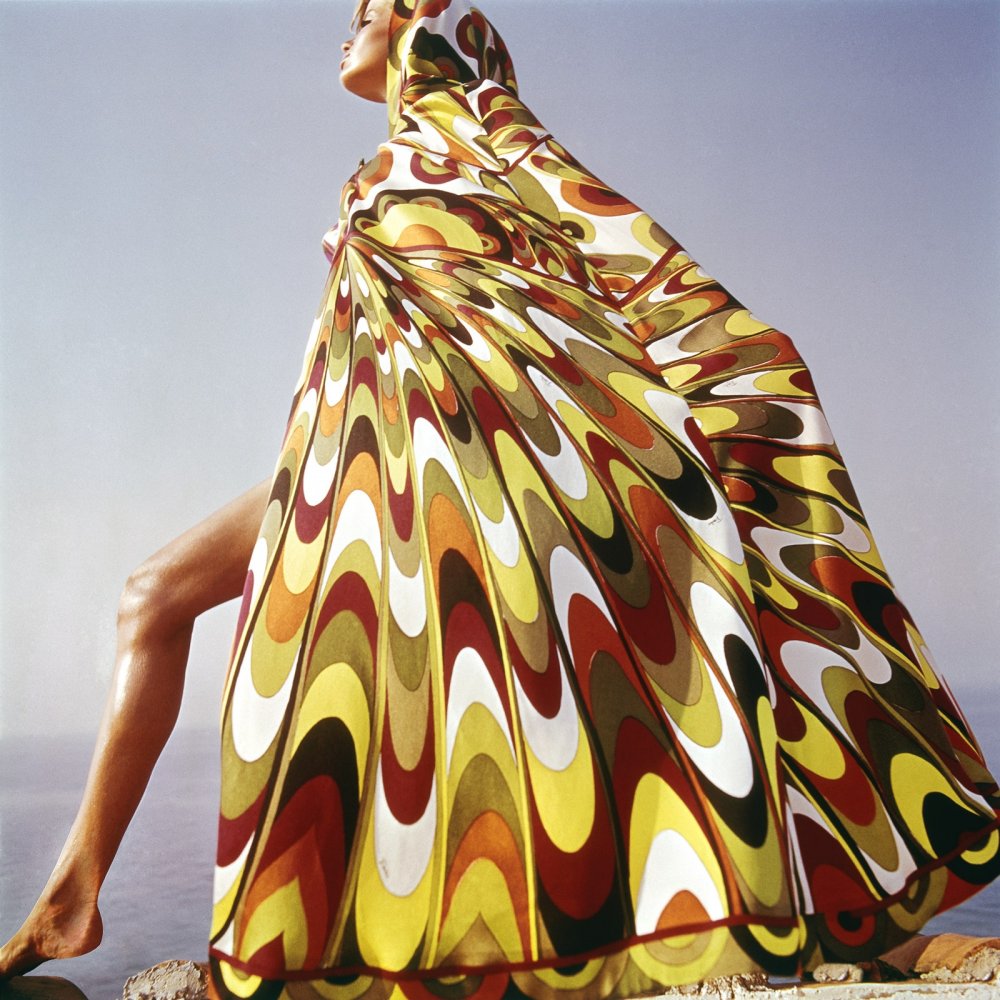
BRIGHT IDEA
A silk cape from the 1960s.
Photographed by Henry Clarke, Vogue, 1965.
Many of the beachy shoes will be available in sizes up to 45, while some of the shirts will also be offered in larger sizes—just one of the ways in which Miceli is trying to make what was an old-school jet-set brand resonate in a more inclusive way. She’s also considering a wider range of prices—“Not everything should start at 1,000 euros,” Miceli says—and embracing the notion that Pucci can be for anyone, at any age: Pinned to Miceli’s inspiration board is a 1989 Ron Galella photograph of Naomi Campbell, Linda Evangelista, and Christy Turlington, along with the then 60-something stylist Polly Mellen, all doing high kicks, cancan style, laughing uproariously.
Prints-wise, Miceli has been drawn to Pucci’s near-hallucinogenic patterns of the ’70s for her debut. “I’m really into Emilio’s psychedelic acid trip,” she says. “I don’t know what the f*ck was going on in his mind—you’re tripping by just looking at the stuff!” In recent years, these prints were re-created by computer, but Miceli is having them drawn by hand again—a human touch that also chimes with her desire for Pucci to be emblematic of taking a slower, more thoughtful approach to life. “Time has become such an issue,” Miceli says. “In every creative field, it has been a problem.”
Unsurprisingly, she’s also living what she’s designing. Taking the job meant a move from her beloved Paris to a city where the pace is notably slower. (“When I first arrived at Vuitton, Camille was my idea of a true Parisian,” says Jacobs. “She has this sort of magic about her in the way she moves through life.”) Miceli has thrown herself into becoming Milanese: She has done the city’s leave-for-the-weekend ritual, visiting her brother in Rome or making trips to Venice and Florence—though she caveats that with a tongue-in-cheek pfft: “It is not very relaxing.”
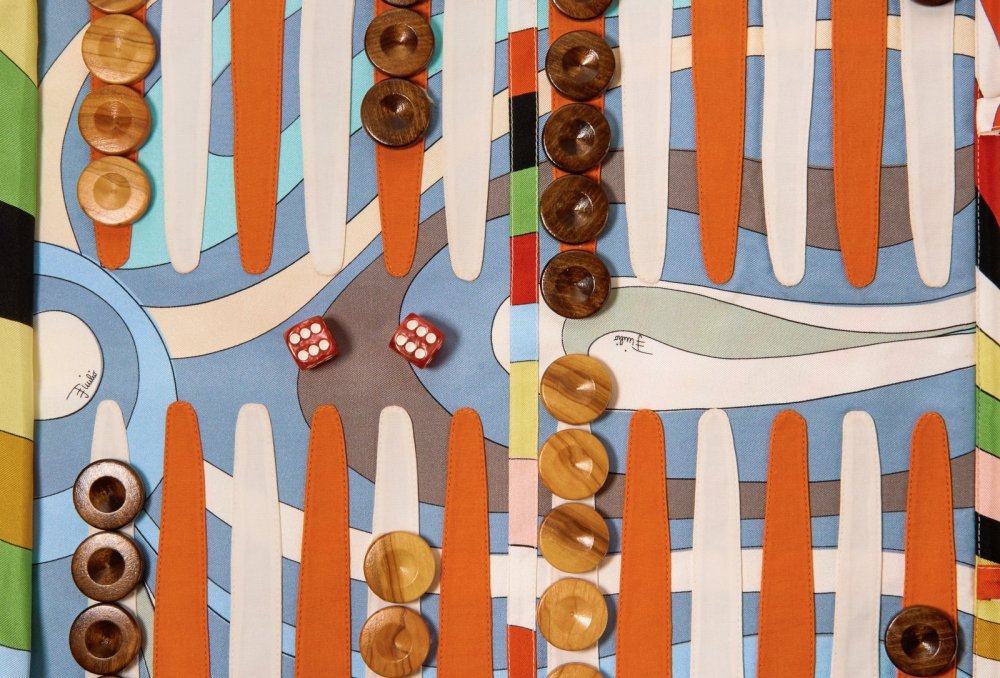
PLAY ON
A Pucci backgammon board.
More suited to her is the way finally having her own place in the city will allow her to have a home life after being in a hotel for so long. “I love to cook,” she says. “I love to have my friends around.” Decor-wise, she is planning to switch out the Pierre Paulin vibe of her Paris place for a quieter, more classical look, with plenty of Madeleine Castaing upholstery and tons of windows. (“I need light, I need sky.”) That change aside, she’s settled into a happy groove here. “I start my day by doing my yoga, then I go to the café—I love going to the café; I love talking to the guy behind the bar,” she says, clearly relishing those everyday moments of simple joy. And after that, she heads to work.
